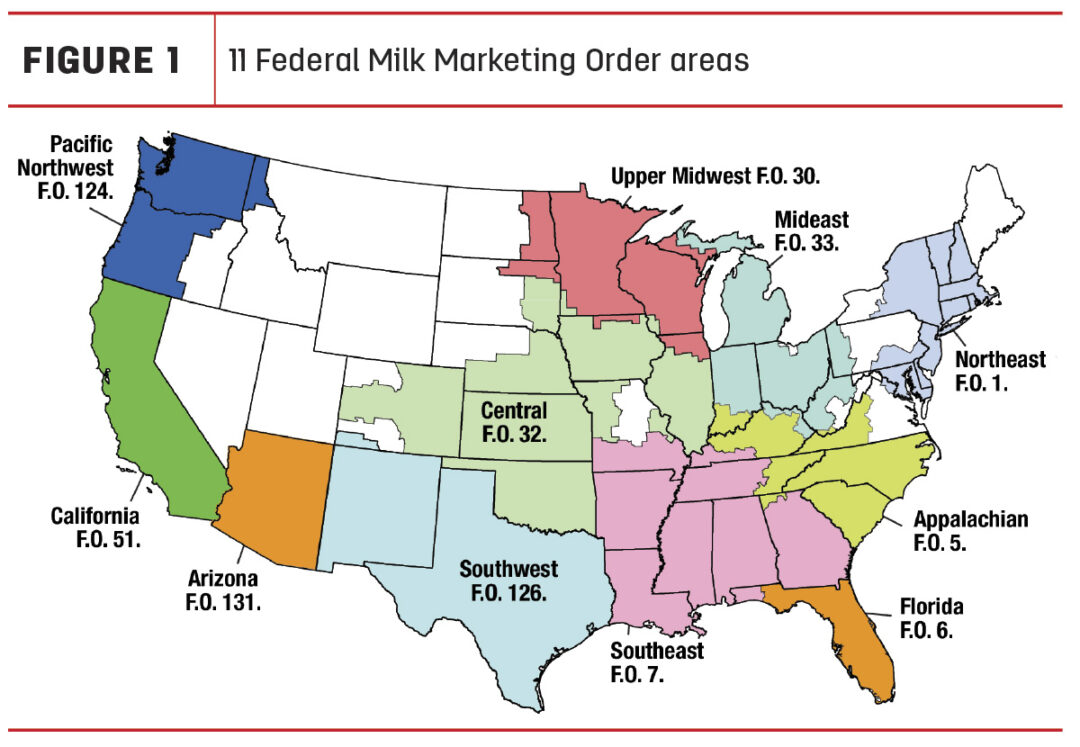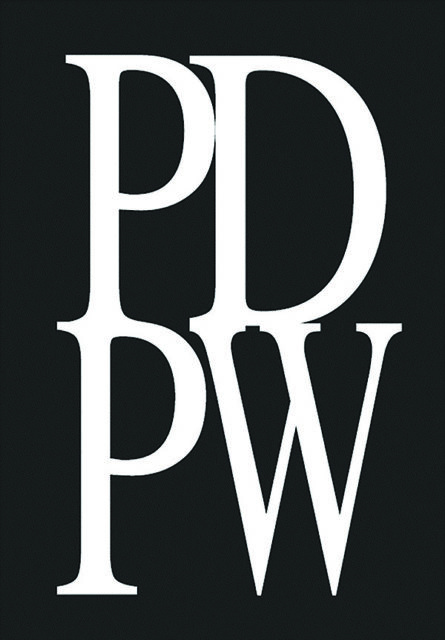Federal Milk Marketing Order (FMMO) regional uniform milk prices were mixed in January, impacted primarily by Class I and Class III milk prices.
Administrators of the 11 FMMOs reported January prices and pooling data, Feb. 11-14. Here’s Progressive Dairy’s monthly review of the numbers to provide some additional transparency to your milk check.
Uniform prices, PPDs
Compared with December 2024, January 2025 statistically uniform milk prices declined in three of the 11 regional FMMOs (Table 1), those with the highest Class I milk utilization. The other eight FMMOs saw uniform prices increase from the previous month.

Among individual orders, the top average was $25.04 per hundredweight (cwt) in Florida, down 40 cents from December and the lowest since June 2024. Despite a $1.49 increase from December, the low average was still in the Upper Midwest FMMO at $20.47 per cwt.
Compared to December, January base producer price differentials (PPDs) were down in all seven applicable FMMOs (Table 1). PPDs have zone differentials, meaning some PPDs could be negative, and milk handlers may also apply PPDs and other “market adjustment factors” differently on your milk check.
Class prices for January
Milk class prices were mixed in January:
- Class I base price: The Class I base price fell again to start 2025. At $20.38 per cwt, the January 2025 advanced Class I base price was down $1.05 from December 2024 and the lowest since June 2024.
Despite the decline, the January 2025 price was still $1.90 per cwt above January 2024. The 2024 average Class I base price was $20.35 per cwt, up $1.15 from a year earlier and the third-highest annual average in the past decade.
- Class I base with zone differentials: Class I zone differentials are added to the base price at principal pricing points to determine the actual Class I price in each FMMO. With those additions, January Class I prices averaged approximately $23.20 per cwt across all FMMOs, ranging from a high of $25.78 per cwt in the Florida FMMO to a low of $22.18 per cwt in the Upper Midwest FMMO.
- Class I mover formula: The spread in the monthly advanced Class III skim milk pricing factor ($8.54 per cwt) and advanced Class IV skim milk pricing factor ($10.95 per cwt) grew to $2.41 per cwt for January. That means that the current Class I mover formula negatively impacted Class I prices.
Based on Progressive Dairy calculations, using the Class I mover calculated under the “higher-of” formula would have resulted in a Class I base price about 44 cents more than the actual price determined using the “average-of plus 74 cents” formula.
The change in the formula back to higher-of calculations – along with zone differential adjustments and other changes – is included in the FMMO changes will be implemented on June 1, 2025.
- At $21.58 per cwt, the January Class II milk price was up 30 cents from December and $1.54 more than January 2024.
- The January Class III milk price jumped $1.72 from December to $20.34 per cwt. It’s a three-month high and up $5.17 from January 2024.
- At $20.73 per cwt, the January 2025 Class IV milk price was down a penny from December but $1.34 more than January 2024.
The spread between January 2025 Class III and Class IV milk prices fell to just 39 cents per cwt, the slimmest gap since March 2023 and shrinking incentives for depooling Class IV milk.
Component values, tests
Contributing to the January milk class price calculations, values for butterfat and protein were both up from a month earlier.
The value of butterfat rose about 3.5 cents per pound from December to about $2.95 per pound.
Meanwhile, the value of milk protein jumped more than 36 cents per pound from December to about $2.33 per pound, a four-month high.
Compared to December, the January value of nonfat solids was down about 1.5 cents at $1.20 per pound, while the value of other solids rose about 9 cents, to 53.8 cents per pound.
Affecting statistical uniform prices “at test,” January’s average butterfat and protein tests and somatic cell counts in pooled milk were mostly steady compared to December in most FMMOs providing preliminary data.
Pooling totals
The USDA releases preliminary January milk production estimates on Feb. 21. With the same number of marketing days compared with December, the total milk volume pooled through FMMOs in January was estimated at 12.66 billion pounds, about 821 million pounds more than the prior month. A large percentage of that increase was powered by growth in Class IV pooling (Table 2), as the Class III-IV milk price gap reduced depooling incentives.

January Class I pooling was up about 150 million pounds from the previous month. At 3.68 billion pounds, it represented about 29.1% of total milk pooled. Class II pooling was down about 171 million pounds to 1.34 billion pounds, representing about 10.6% of the total pooled.
At 6.23 billion pounds, Class III pooling was down 37 million pounds from December and represented about 49.2% of the total pool.
In contrast, January 2025 Class IV pooling increased about 536 million pounds from December, to about 1.4 billion pounds, and represented 11.1% of the total milk pooled.
Looking ahead
February uniform prices and pooling totals will be announced on March 11-14. Based on FMMO advanced prices and current futures prices, monthly uniform prices will again be mixed.
- Class I base price: Already announced, the February 2025 advanced Class I base price is $21.27 per cwt, up 89 cents from January and $3.28 more than February 2024.
- Class I base with zone differentials: Class I zone differentials are added to the base price at principal pricing points to determine the actual Class I price in each FMMO. With those additions, February Class I prices will average approximately $24.09 per cwt across all FMMOs, ranging from a high of $26.67 per cwt in the Florida FMMO to a low of $23.07 per cwt in the Upper Midwest FMMO. Those prices will be felt in February regional FMMO uniform milk prices.
- Class I mover formula: The spread in the monthly advanced Class III skim milk pricing factor ($10.32 per cwt) and advanced Class IV skim milk pricing factor ($10.90 per cwt) shrunk to just 58 cents per cwt for February. That means that the current but soon-to-be altered Class I mover formula positively impacted Class I prices.
Based on Progressive Dairy calculations, using the Class I mover calculated under the higher-of formula would have resulted in a February Class I base price of about $20.83 per cwt, 44 cents less than the actual February price determined using the average-of plus 74 cents formula.
The change in the formula back to higher-of calculations will be implemented on June 1.
- Other class prices: February Class II, III and IV milk prices will be announced on March 5. As of trading on Feb. 13, the Chicago Mercantile Exchange (CME) Class III milk futures price closed at $20.32 per cwt for February, down 2 cents from the January price. The February Class IV milk futures price closed at $19.72 per cwt, down $1.01 from January.
If Class III-IV futures prices hold, the February Class III-IV milk price gap will spread to 60 cents per cwt, switching small incentives to Class III depooling.
Other information
- The USDA’s monthly World Ag Supply and Demand Estimates (WASDE) report was released on Feb. 11. The milk production estimate for 2025 was reduced from last month due to lower expected cow inventories. Find the summary on the Progressive Dairy website.
- U.S. dairy export value was up 2% in December to finish the year at $8.2 billion, the second-highest value on record.
- The enrollment period for the 2025 Dairy Margin Coverage (DMC) program remains open until March 31. Dairy producers can submit applications to USDA’s Farm Service Agency (FSA).
Also, check the Progressive Dairy website later this month for milk production, cull cow marketing, risk management and Dairy Margin Coverage (DMC) program margin updates.










